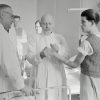Key HC Metrics Now: 7 Proven Indicators for Healthcare Staffing Success in 2025
In the complex and demanding world of healthcare, the adage “what gets measured gets managed” holds profound truth, especially concerning your most valuable asset: your staff. Tracking the right healthcare staffing metrics is no longer just an HR task; it’s a strategic imperative for organizational success. Focusing on “Key HC Metrics Now” – the Key Healthcare Metrics that demand attention Now – allows organizations to make data-driven decisions that optimize costs, enhance patient care quality, and boost staff satisfaction and retention. Hathaway Healthcare Staffing champions a data-informed approach to building effective and resilient healthcare teams.
Table of Contents
Why Focusing on “Key HC Metrics Now” is Crucial for Healthcare Organizations
Moving beyond simply counting employee numbers, strategic healthcare organizations utilize a range of metrics to gain deep insights into their workforce dynamics. These healthcare workforce metrics that matter provide a clear picture of recruitment effectiveness, staff stability, cost management, and, crucially, the impact of staffing on patient care. By making data-driven healthcare staffing decisions, organizations can proactively address challenges, optimize resource allocation, and align their workforce strategy with overall business goals. As highlighted by organizations like the Agency for Healthcare Research and Quality (AHRQ) regarding quality measures, robust data is key to improvement.
Unpacking “Key HC Metrics Now”: What to Track for Optimal Staffing
Focusing on “Key HC Metrics Now” means prioritizing the indicators that provide the most actionable insights for your current healthcare staffing challenges and strategic objectives. It’s about distinguishing between “vanity metrics” (those that look good but offer little practical value) and truly essential metrics that drive meaningful change. These indicators should provide a balanced view of efficiency, quality, cost, and employee well-being related to your staffing practices.
7 Proven Indicators (Key HC Metrics Now) for Staffing Success
While numerous metrics exist, these seven proven indicators are essential “Key HC Metrics Now” for any healthcare organization aiming for staffing excellence:
1. Time-to-Fill & Time-to-Hire
Time-to-fill measures the total days a position remains open, while time-to-hire measures the days from when a candidate applies until they accept an offer. These healthcare recruitment metrics are crucial, especially for urgent roles, as prolonged vacancies can strain existing staff and impact service delivery. Tracking these helps identify bottlenecks in your recruitment process. For specific approaches to urgent roles, consider these strategies to improve fill rates for urgent roles.
2. Cost-per-Hire
This metric calculates the total expenses associated with recruiting a new employee, including advertising, recruiter salaries/commissions, agency fees, background checks, and onboarding costs. Understanding your cost-per-hire helps in budgeting for recruitment efforts and evaluating the cost-effectiveness of different sourcing strategies. It’s a fundamental “Key HC Metrics Now” for financial oversight.
3. New Hire Turnover Rate (e.g., at 90 days, 1 year)
High turnover among new hires, particularly within the first year, is a significant red flag. It indicates potential issues with your selection process, onboarding effectiveness, or unmet expectations. This metric is vital for measuring staffing effectiveness in hospitals and clinics, as early attrition is exceptionally costly. Improving retention of healthcare professionals starts with understanding why new hires leave.
4. Staff Vacancy Rate (by department/role)
The staff vacancy rate shows the percentage of unfilled positions within a specific department, role, or the entire organization. Persistently high vacancy rates in certain areas can signal underlying problems such as uncompetitive compensation, poor working conditions, or a limited talent pool, requiring targeted intervention. This is one of the critical “Key HC Metrics Now” for workforce planning.
5. Patient-to-Staff Ratios & Skill Mix Adequacy
For clinical areas, tracking patient-to-staff ratios (especially nurse-to-patient ratios) and the adequacy of the skill mix is directly linked to patient safety and quality of care. These are often among the core key performance indicators for nurse staffing. It’s not just about the number of staff, but also ensuring they have the right skills for the patient acuity. The impact of staffing metrics on patient care here is undeniable, often reflected in how staffing affects HCAHPS scores and patient feedback.
6. Employee Engagement and Satisfaction Scores
While not direct staffing metrics, employee engagement and satisfaction levels are heavily influenced by staffing adequacy, workload distribution, leadership quality (which staffing choices impact), and overall work environment. These scores are leading indicators of potential turnover, productivity issues, and even patient experience. For insights on boosting morale, explore the power of engagement in healthcare.
7. Overtime Percentage and Agency Staff Utilization
Consistently high overtime rates or heavy reliance on expensive agency staff often point to underlying issues such as chronic understaffing, inefficient scheduling, or high absenteeism. Tracking these “Key HC Metrics Now” is crucial for managing labor costs and identifying areas where permanent staffing solutions or process improvements are needed.
Leveraging Staffing Metrics for Continuous Improvement
Collecting data on these “Key HC Metrics Now” is just the first step. The real value comes from consistently tracking staffing data for improvement. This involves:
- Establishing benchmarks and targets for each metric.
- Regularly analyzing trends to identify areas of concern or success.
- Investigating the root causes behind metric performance.
- Using these insights to make informed adjustments to recruitment strategies, retention initiatives, workforce planning, and operational processes.
The use of healthcare workforce analytics and tools like predictive analytics in healthcare staffing can significantly enhance this continuous improvement cycle.
Hathaway Healthcare Staffing: Your Partner in Data-Driven Workforce Solutions
Hathaway Healthcare Staffing understands the importance of a data-driven approach to workforce management. We work with healthcare organizations to not only fill vacancies but also to provide talent that positively impacts key performance indicators. When you partner with dedicated healthcare staffing experts, we can help you achieve your staffing goals and support your efforts to monitor and improve your “Key HC Metrics Now.”
Making “Key HC Metrics Now” Your Compass for Staffing Excellence
In the complex healthcare environment, effectively tracking and acting upon the “Key HC Metrics Now” provides a vital compass for navigating towards staffing excellence. These data-driven insights empower organizations to optimize their workforce, enhance patient care, improve employee satisfaction, and achieve their strategic objectives. By making these metrics a central part of your operational and strategic decision-making, you build a foundation for a more resilient, efficient, and high-performing healthcare organization. For expert assistance in optimizing your healthcare workforce, contact Hathaway Healthcare Staffing.






